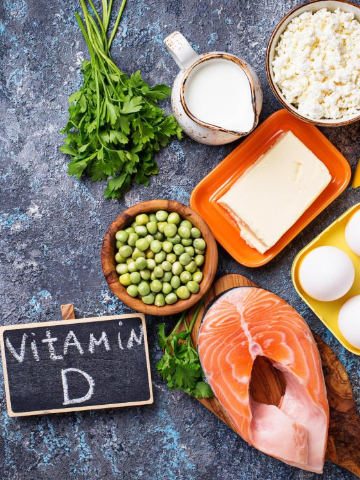
A recent nationwide survey in the United Kingdom showed that more than 50% of the adult population have insufficient levels of vitamin D and that 16% have severe deficiency during winter and spring. What are your Vitamin D levels?
What is Vitamin D?
Vitamin D helps regulate the amount of calcium and phosphate in the body and these nutrients are needed to keep bones, teeth and muscles healthy. Some studies have also indicated benefits elsewhere, including lowering the risk of cancer, diabetes and improving the immune system (although further research in this area is needed). It is due to this important role it plays that Vitamin D is checked in all Measure Health’s screenings.
Where do we get Vitamin D from?
- 90% of our Vitamin comes from ultraviolet B light
- Dietary Vitamin D comes from oily fish, red meat, liver, egg yolks and fortified food
What might increase your risk of Vitamin D deficiency?
- Having non-white skin (those with darker skin tones)
- Lacking sunlight exposure or being in an area with atmospheric pollution
- Wearing skin concealing garments or having no direct sunlight through strict sunscreen use
- Being elderly or overweight
- Observing a vegetarian or otherwise having a low Vitamin D diet
- Having Liver disease
- Using certain medications such as anticonvulsants, rifampicin, cholestyramine or steroids
How much sun exposure is needed to provide adequate vitamin D levels?
In a fair skinned person, 20 - 30 minutes of sunlight exposure on the face and forearms at midday is estimated to generate adequate levels of vitamin D. Two or three such sunlight exposures a week are sufficient to achieve healthy vitamin D levels in summer in the UK.
For a non-fair skinned or elderly person you need between two and ten times to get the same level of vitamin D synthesis as fair skinned young individuals. It is tough to get that much sun and this is why Vitamin D deficiency is common amongst ethnic minorities.
Unfortunately, for six months of the year (October to April), the UK’s ultraviolet B wavelengths necessary for vitamin D synthesis, is insufficient, which is why millions of people take vitamin D supplements particularly during October to April.
How much Vitamin D supplementation should we take daily?
We should take a maintenance dose of 1000-4000 IU per day (for months October- April at a minimum) or throughout the year if you do not spend much getting direct sunlight to your skin.
Symptoms suggestive of Vitamin D deficiency?
- Pain that may present in Rib, hip, pelvis, thigh, and foot
- Muscle weakness or aches which could be diffuse or in the limbs and back
Is there a link between low vitamin D levels and higher risk of Covid 19 infection?
The joint guidance from the National Institute for Health and Care Excellence (NICE), Public Health England, and the Scientific Advisory Committee on Nutrition
concludes that there is little good evidence on vitamin D and covid-19 and highlights the need for further research.
However, given that vitamin D deficiency is highly prevalent globally, there is little harm in recommending optimal sunlight exposure or vitamin D supplementation to the general public from a nutritional perspective.
However, it is important to note that raised levels of Vitamin D should not give a false sense of security, and that the measures to prevent spread of COVID 19 which include social distancing, regular hand washing, face masks and vaccinations are fundamental for protection.
